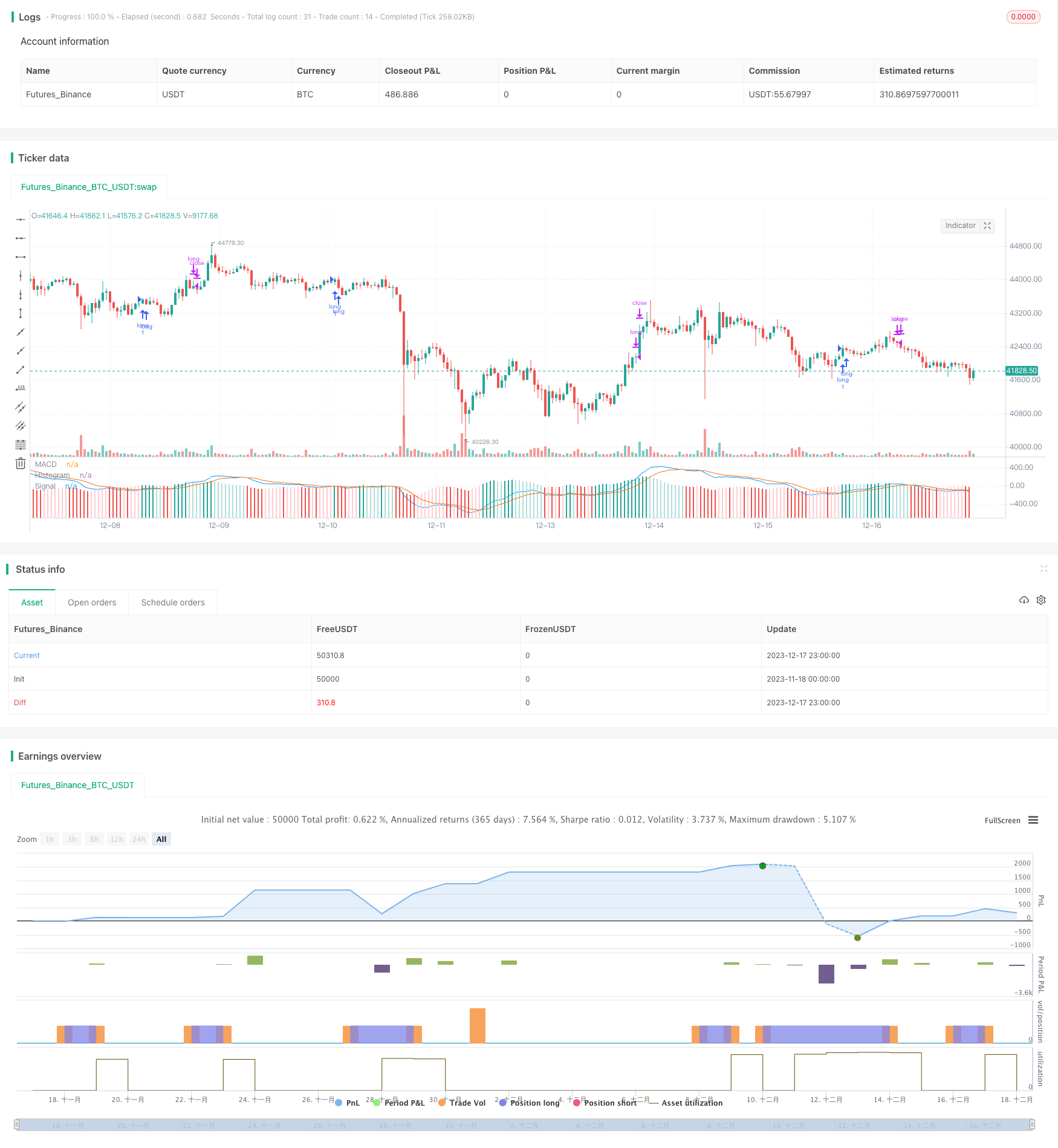
概述
本策略运用MACD指标构建长线交易信号,在MACD指标低于特定水平时做多,利用反转交易机会获利。
策略原理
当MACD指标线低于 SIGNAL信号线且MACD绝对值低于-0.00025时产生做多信号。做多后,如果MACD线重新上穿SIGNAL线则平仓。
本策略利用MACD指标检测超卖区间,根据均线理论,股价短期内存在反转概率,根据这个概率建立做多信号。
策略优势
- 利用MACD指标判断超卖区间,具有一定的可靠性。
- 简单的交易信号和规则,容易实施。
- 长线持仓,不频繁交易,降低交易成本和滑点损失。
策略风险
- 反转失败风险。如果没有反转就会亏损。
- 参数不当导致失效。MACD参数设置不当会导致产生错误信号。
可以通过优化参数减小此风险。
策略优化
- 优化MACD参数,找到最佳参数组合。
- 测试不同持仓时间,找到最佳持仓周期。
- 增加止损机制。
总结
本策略利用MACD指标判断超卖区间形成的反转概率建立做多信号,通过长线持仓方式获利。MACD参数优化和止损机制增加可靠性。总体来说,利用较为简单的指标和规则构建了一个易于理解和实施的量化策略。
策略源码
//@version=3
strategy(title="MACD - EURUSD", shorttitle="MACD EURUSD")
// Getting inputs
fast_length = input(title="Fast Length", defval=12)
slow_length = input(title="Slow Length", defval=26)
src = input(title="Source", defval=close)
signal_length = input(title="Signal Smoothing", minval = 1, maxval = 50, defval =9)
sma_source = input(title="Simple MA(Oscillator)", type=bool, defval=false)
sma_signal = input(title="Simple MA(Signal Line)", type=bool, defval=false)
// Plot colors
col_grow_above = #26A69A
col_grow_below = #FFCDD2
col_fall_above = #B2DFDB
col_fall_below = #EF5350
col_macd = #0094ff
col_signal = #ff6a00
// Calculating
fast_ma = sma_source ? sma(src, fast_length) : ema(src, fast_length)
slow_ma = sma_source ? sma(src, slow_length) : ema(src, slow_length)
macd = fast_ma - slow_ma
signal = sma_signal ? sma(macd, signal_length) : ema(macd, signal_length)
hist = macd - signal
plot(hist, title="Histogram", style=columns, color=(hist>=0 ? (hist[1] < hist ? col_grow_above : col_fall_above) : (hist[1] < hist ? col_grow_below : col_fall_below) ), transp=0 )
plot(macd, title="MACD", color=col_macd, transp=0)
plot(signal, title="Signal", color=col_signal, transp=0)
longCond = crossover(macd, signal) and macd < -0.00025
exitLong = crossover(macd, hist)
strategy.entry("long", strategy.long, when=longCond==true)
strategy.close("long", when=exitLong==true)